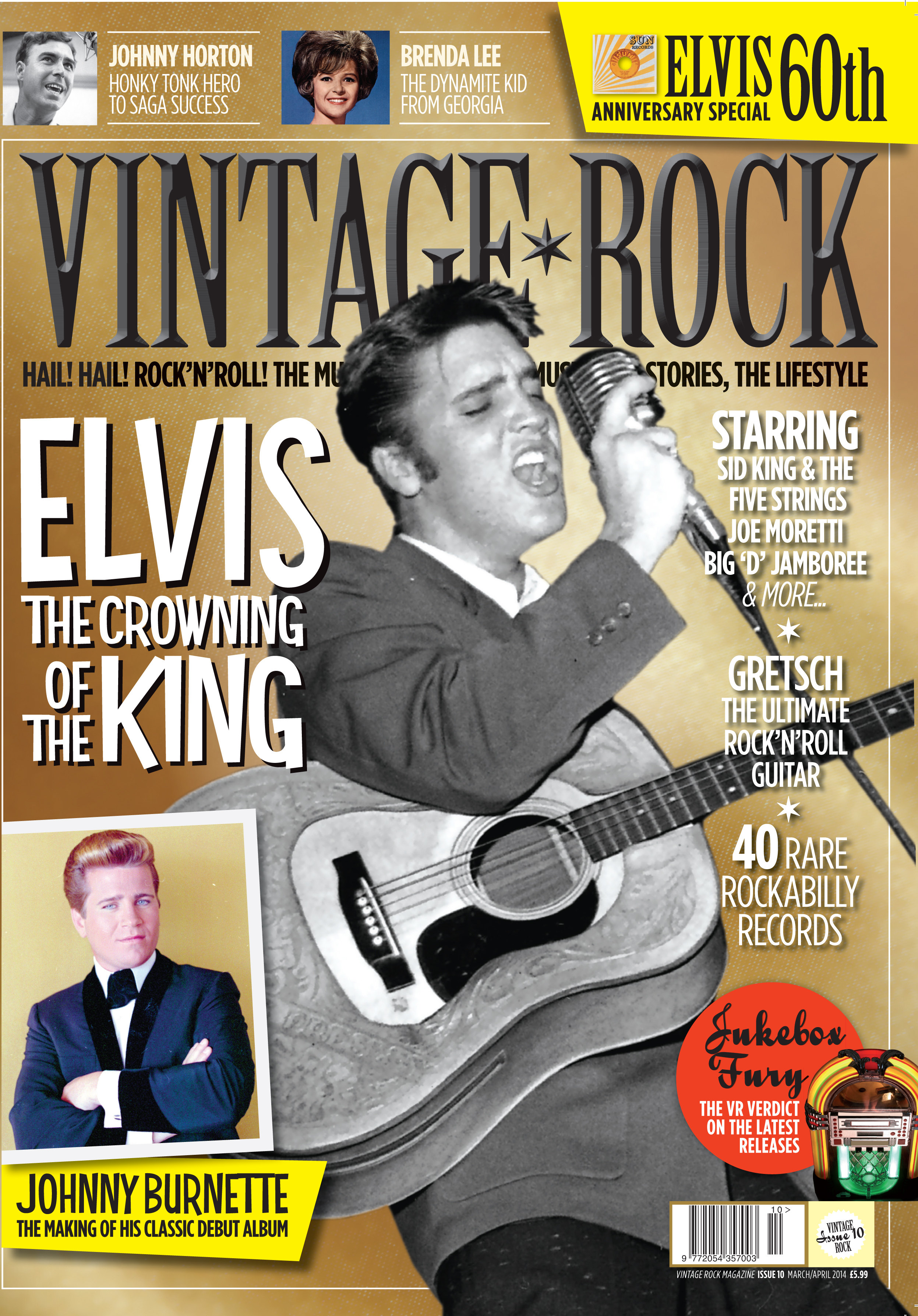They called Atlantic Records “the House that Ruth built” after the early successes of the singer that helped them gain a toehold in the R&B market of the early 50s. Released in 1957, Ruth Brown’s debut album, Rock & Roll, showcased a trailblazing talent… By Jack Watkins
The 50s was effectively the last decade in which vocal prowess dominated the record industry. There would be many relishable and individualistic vocalists in the years to come – especially in the soul field – but generally speaking, the era of groups and bands moved the emphasis away from outstanding single voices, while the visual image also became more important.
Singer-songwriters created material that, while notable for its lyrical content, made fewer technical vocal demands. Increasingly sophisticated production techniques also drew attention away from outstanding individual voices. In the 50s, however, the key to success was still felt to be a voice that was strong and notable, recognisable almost from the moment the artist opened their mouth. This was the golden age of the ‘big voice’, and in the R&B and rock’n’roll arenas, there was no finer example than Ruth Brown, impossible to mistake for anyone else and – at her best – totally sensational.
Rock & Roll, released in 1957, was her first album but encapsulated seven years of quality recordings for Atlantic which, along with The Clovers, had effectively shifted the New York company Atlantic from its uncertain beginnings as a jazz label to being one of the most highly regarded purveyors of R&B and pop-oriented rock’n’roll. The earliest track, So Long, was also one of the first Brown did for the company, recorded in May 1949. Boss Ahmet Ertegun had signed her in 1948 because he’d been desperate to find a young artist who sounded like Dinah Washington. However, a serious car accident had sidelined Ruth for several months.
Her appearance in the studio that day was to enable the 24-year-old to get a feel for recording while a session with Eddie Condon’s jazz combo was underway. However, when suddenly asked to step up to the mic, Brown chose to sing So Long, an old blues ballad she’d listened to and loved while growing up in Portsmouth, Virginia. With Condon backing her, producer Herb Abramson was impressed enough to release the test recording of So Long and an original song, It’s Raining, as Ruth’s first single. It made No.6 on the R&B chart in the States and is a good example of her early style, with only faint traces of the bubbly, extrovert approach that she would shortly develop.
A succession of slow ballads earned her the nickname ‘The Girl With The Tear In Her Voice’, but a loping version of the Doris Day slowie Sentimental Journey packed more punch, with Abramson bringing in the esteemed vocal group the Delta Rhythm Boys – who recorded for Atlantic as the Four Sharps – to sing behind her. Brown’s recording was released as a single in 1950 and reissued in 1954.
Atlantic, though, wanted to broaden its selling base. Sales were good in major northern cities like New York and Chicago, and over in Los Angeles, but made limited inroads in the South and among R&B fans. Ruth’s Teardrops From My Eyes was one of the first singles to deliberately target this market and went on become among the biggest R&B songs of 1950. It’s a fascinating record because, although it swings rather than rocks, with its sense of restlessness and encapsulation of elements from the swing era, small jazz combos, blues and jumping R&B, it made a mockery of the arbitrary barriers that often get erected between styles of music. Ahmet Ertegun, interviewed by Arnold Shaw in Honkers And Shouters, described the song as having a “pop but blues-directed dance-band arrangement.”
Charlie Gillett, in his book Making Tracks: The Story Of Atlantic Records And The Growth Of A Multi-Billion-Dollar Industry suggested that this was the number that established the Brown recording persona and her way of dealing with men in various song scenarios, “with a wry humour, a seductive catch in her voice, and a generally resilient tone that sometimes made her seem susceptible, to the right guy.”
Teardrops From My Eyes was written by Rudy Toombs, who was to provide several songs for Ruth and also wrote One Mint Julep for The Clovers. 5-10-15 Hours was another big Toombs-penned Brown hit from 1952, the title of this suggestive track inspired by the success that Billy Ward And The Dominos had just enjoyed with another raunchy “round the clock” number, Sixty Minute Man. It allowed more space for Ruth’s sultry personality to express itself. Vann ‘Piano Man’ Walls, who played on Joe Turner’s Atlantic hits like Chains Of Love and Boogie Woogie Country Girl, was on piano.
While Daddy Daddy, again written by Toombs, successfully cashed in on the 50s’ mambo mania, it was the Herb Lance and Johnny Wallace-penned (Mama) He Treats Your Daughter Mean, recorded at the end of 1952, that was, as Brown told Arnold Shaw, “a monster… the biggest record I ever had – I mean for airplay and the exposure I got. That really made the name of Ruth Brown light up.”
The irony is that, at least to begin with, she didn’t even like the song and felt it made no sense. But aided by a catchy tambourine intro and the guitar of Mickey Baker, the track gave her a first R&B No.1. Brown would record it again in 1958, this time with Everett Barksdale on guitar and King Curtis on sax in a more rock’n’roll style. A further inferior version in 1962 featured a girly chorus, but the first two incarnations make an interesting comparison – the first recording just has the edge over the second one, the latter having more obviously generic rock’n’roll touches.
Wild Wild Young Men, written by Ertegun himself under his pen name Nugetre (Ertegun spelt backwards), lived up to the billing. This rollicking number was another R&B smash, though arguably Rose Maddox surpassed even this fabulous recording with her later Columbia version. When played live, the tempo was so fast bandleaders told Brown that no-one could sing the lyric and be understood but she always delighted in proving them wrong.
As for Hello Little Boy, written by Brown herself, this raw-rockin’ R&B hybrid, once again with horn riffs that were obviously rooted in the swing era, was a tour de force of blowing and shouting. Ruth’s exhortations to the players, who included Sam ‘The Man’ Taylor, are infectious and the whole thing has a feel of unaffected spontaneity. She never recorded anything at a faster tempo, and few could have done so even if they tried. It ranks as one of the great female rockin’ performances on wax, blowing out of the water the relatively few other operators in that field during the 50s.
Taken at a slower pace but still bubbling with emotional commitment, the doo-woppy ballad, Oh What A Dream, was Brown’s self-declared favourite. Another big seller, the vocal backing was supplied by The Rhythmakers, who were actually the stellar Atlantic vocal group, The Drifters. But any hope of a pop crossover was thwarted by a note-for-note Patti Page cover on Mercury. Brown had fond recollections of the man who wrote the song for her, Chuck Willis, describing the tragically short-lived singer songwriter to Arnold Shaw as softly spoken, unassuming, and humble.
Oh What A Dream might be described as a quintessential Brown vocal, with the back-of-the-throat catch, the squeal and mock tearfulness, overdone for great dramatic effect without feeling like the singer is truly heartbroken. It was a voice that embodied the synthetics of the rock’n’roll era, and was maybe a clue as to why she’d struggle in the following decade to adapt to the more authentic expressions of soul music.
But in the mid-50s, there was no stopping her on the R&B charts. Mambo Baby was another No.1, while the jumping As Long As I’m Moving gave her snappy lines like, “You’ve got big broad shoulders, built like a trailer truck.”
The song was penned by Jesse Stone under his Charles Calhoun moniker, the writer of other classics like Money Honey and Shake Rattle And Roll and who did the arrangements on many Brown tracks. Ertegun told Gillett that Stone, “did more to develop the basic rock’n’roll sound than anyone else, though you hear a lot about Bill Haley and Elvis Presley.”
It’s Love Baby, underpinned by a driving boogie rhythm straight out of the South, drew one of the classic shouting, squealing Brown vocals. For once, though, she was covering someone’s else song, the original being by Louis Brooks and his Hi-Toppers.
Despite all this R&B chart success, Ruth’s records received little airplay from white radio jocks, even though Ertegun reckoned she “didn’t sound all that black.” It torpedoed any hopes of crossover success. She tried almost everything, including Old Man River (again backed by The Rhythmakers aka The Drifters), the Kern/Hammerstein standard other individualistic artists like Hadda Brooks and Screamin’ Jay Hawkins also had fun with.
But it wasn’t until Atlantic deployed Jerry Leiber and Mike Stoller to write Lucky Lips that she tasted pop success, finally registering at No.25 in the Billboard Hot 100 in March 1957. Only the follow-up, This Little Girl’s Gone Rockin’, written by Bobby Darin (not on the LP), would enjoy similar success. Even so, as Shaw noted, along with Dinah Washington, Esther Phillips and Etta James, she was one of the “towering females of R&B.” It’s impossible to listen to Brown’s records without smiling.






